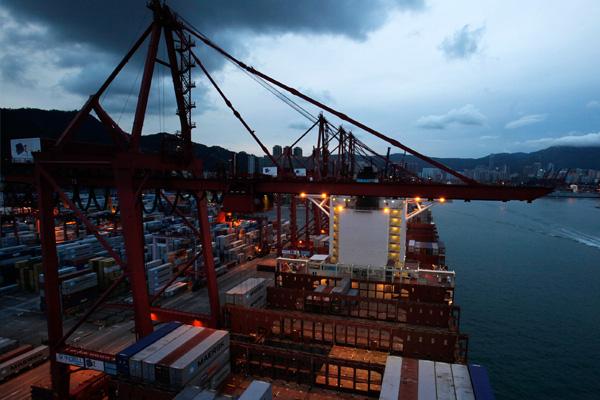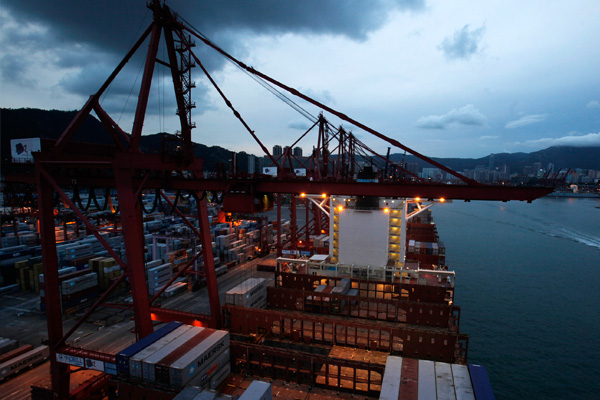
Skip to
The past few years have been among the worst in the global shipping industry’s history. Too many vessels chasing too little cargo have left hundreds of ships idle, forcing container lines to under-bid each other.
This has resulted in record-low freight rates worldwide, barely covering the cost of fuel.
In 2016, the shipping industry saw the demise of Hanjin Shipping, one of its biggest members. The South Korean mega shipping line declared bankruptcy in August, becoming the largest shipper ever to go insolvent.
The downturn has also set off a wave of consolidations. Japan’s three biggest container lines – Nippon Yusen, Mitsui OSK Lines and Kawasaki Kisen Kaisha – said in October that they plan to combine their operations in an effort to return to profit. The merger will create the world’s sixth-largest fleet. France’s CMA CGM, the world’s third-largest container line, bought Singapore’s Neptune Orient Lines in late 2015, and the merger of Germany’s Hapag-Lloyd and United Arab Shipping is expected to be completed soon, creating one of the world’s largest shipping lines.
As shipping companies consolidate to cut costs and ride out the rough waters, more deals are likely, creating more M&A work for shipping lawyers. “Due to the generally bad market, companies have sought to consoli- date their businesses, such as through mergers,” says Lianjun Li, a shipping partner at Reed Smith Richards Butler in Hong Kong. He cites the merger of China Shipping Container Lines and COSCO (China Ocean Shipping) Container Lines – two of China’s largest shipping companies – as an example.
Their merger last year created COSCO Shipping – the world’s fourth-largest container shipper by capacity.
“Other ways in which shipping companies have sought to reduce costs also include entering into various alliances, strategic partnerships and vessel sharing agreements,” adds Li. “Shipping lawyers have likewise had to adjust to the changing market demands, and have adapted their services to this changing shipping landscape.”
Back to topDECLINING DISPUTES
Though there’s more M&A work, disputes work – a mainstay for shipping lawyers – has been on the decline.
“Companies don’t have the money or don’t want to spend their reduced income on disputes because the other party does not have the money to pay even if the company wins,” explains Murali Pany, managing partner of Singapore’s Joseph Tan Jude Benny (JTJB). “Parties are also choosing to negotiate and reach a compromise. Another reason is that companies have prioritised restructuring, deals and internal re-organisation, which have increased.”
JTJB has a strong disputes practice, with five of its nine partners in both the shipping and commer- cial dispute practices, but the firm isn’t letting the declining disputes work hit its headcount.
“The firm and its partners are recognised for our expertise in shipping law, so we get our fair share of work,” says Pany. “The size of our team has not and is not expected to change. The existing team already has the expertise and experience to deal with all aspects of the work.”
Reed Smith also said the firm’s shipping team has remained similar in size over the last few years, despite the worst downturn in the industry’s history. “Being a large full-service firm, we have a dedicated banking and finance team, disputes resolution team, and corporate/transactional team, which are all extremely well placed to adapt to the changing circumstances and needs of our clients,” shares Li.
Back to topON THE HORIZON
There are signs that point to a recovery for the shipping industry, which carries more than 90 percent of the world’s manufactured goods.
Prices for shipping containers have risen to their highest since October 2015, a clear indicator that seaborne trade is increasing and should grow further this year, reported Reuters.
The Harpex Shipping Index, which tracks weekly shipping container rates, has climbed 40 percent this year to 439 points. Container charterers say that lead times to order container have risen – to over a month in some cases – because not enough are available to meet demand, according to Reuters. Maersk, the world’s largest container shipping line, beat first-quarter net profit forecasts in May, reporting signs of improvement at its long-suffering container shipping business. Reed Smith’s Li is upbeat about the next 12 months, with shipping work expected from large-scale infrastructure investments, such as China’s $1 trillion One Belt, One Road project. “Hong Kong is the gateway for these initiatives, and the shipping lawyers there would benefit,” he says.
JTJB’s Pany is less optimistic, believing that the gap between supply and demand is going to persist for at least the next year or two.
“More consolidations are widely expected. Parties who consolidate are focussed on settling in, getting used to their new set-ups and streamlining operations,” notes Pany. “So I expect the trend to continue for shipping lawyers in the next 12 months–less work overall, less disputes work and a shift towards restructuring, deals and corporate advice.”
While consolidations can improve efficiencies, Pany points out that this approach does not address the fundamental long-term problems of having surplus capacity and low demand globally. “Consolidations are not going to remove excess capacity – it will just move this capacity around,” he says. “Ultimately, excess capacity has to be shed for there to be real progress and prospect of recovery.”
But the tides will change eventually, and Pany is more positive about the industry’s medium- and long-term prospects. As he explains, “Asia is still a key global economic driver, and the shipping industry will improve in time once it has recalibrated.”
Back to top


